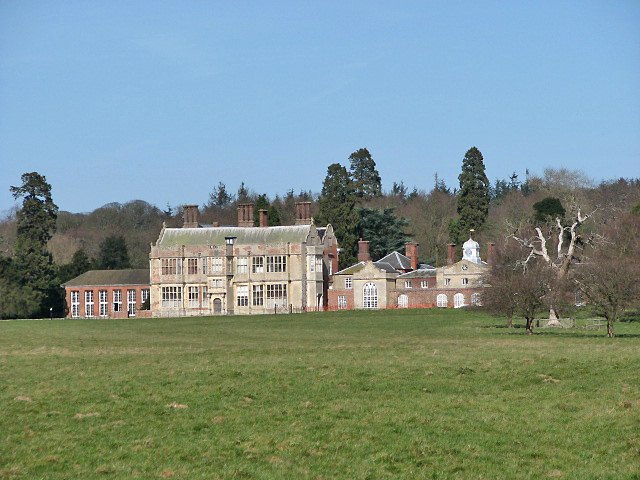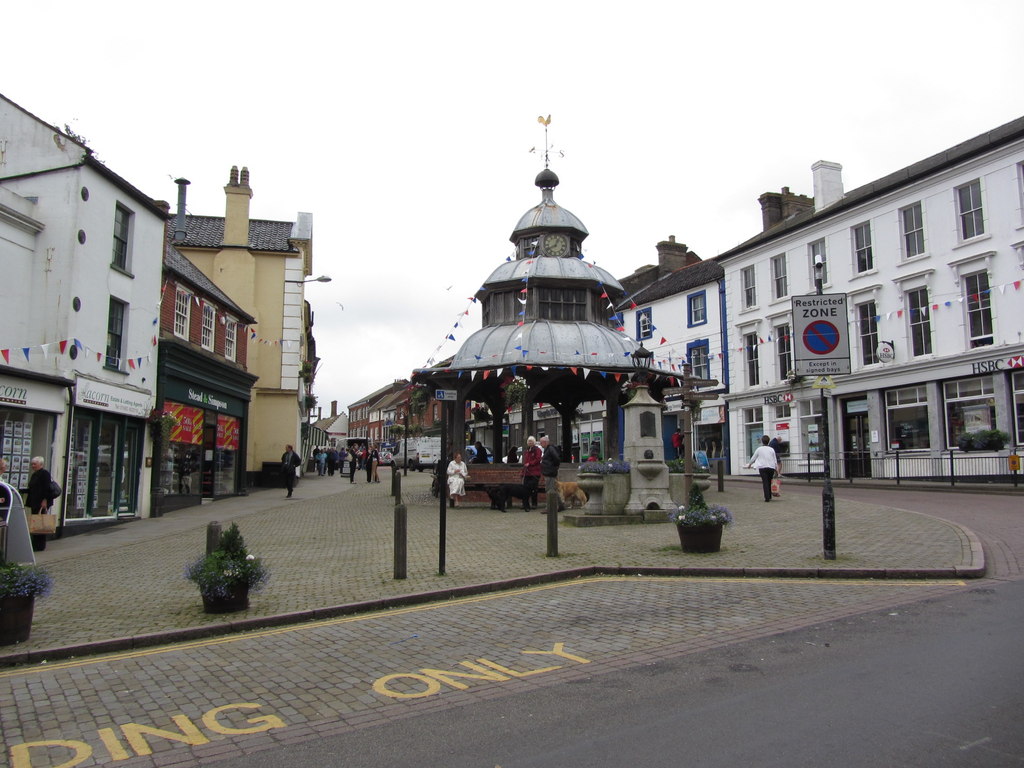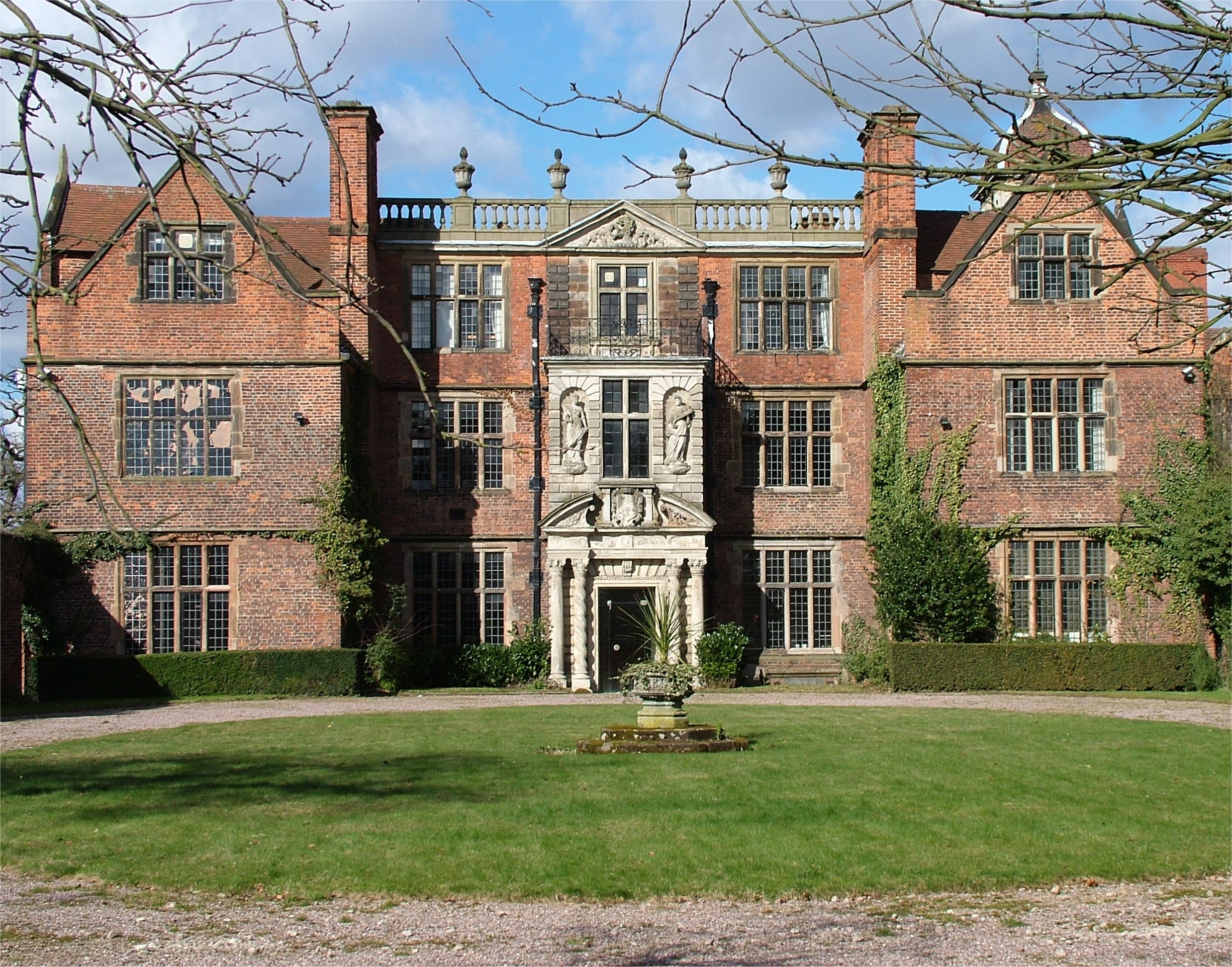|
Felbrigg
Felbrigg is a village and civil parish in the English county of Norfolk. Felbrigg is located south-west of Cromer and north of Norwich. History Felbrigg's name is of Viking origin and derives from the Old Norse for a plank bridge. Felbrigg parish has been the site of the discovery of several Roman artefacts including pottery, coins, brooches and a figurine of Priapus. Despite this, no conclusive evidence of a Roman settlement has been identified. In the Domesday Book, Felbrigg is listed as a settlement of 6 households in the hundred of North Erpingham. In 1086, the village formed part of the East Anglian estates of Roger Bigod. Geography According to the 2021 census, Felbrigg has a population of 201 people which shows an increase from the 193 people recorded in the 2011 census. Felbrigg sits along the B1436, between Cromer and Thorpe Market. Felbrigg Woods is a Site of Special Scientific Interest and is mainly within the grounds and estate of Felbrigg Hall. The w ... [...More Info...] [...Related Items...] OR: [Wikipedia] [Google] [Baidu] |
Felbrigg Hall
Felbrigg Hall is a 17th-century English country house near the village of that name in Norfolk. Part of a National Trust property, the unaltered 17th-century house is noted for its Jacobean architecture and fine Georgian interior. Outside is a walled garden, an orangery and orchards. The house and grounds were bequeathed to the National Trust in 1969 by Robert Ketton-Cremer. The hall is Grade I on the National Heritage List for England. Most of the grounds are part of Felbrigg Woods, a Site of Special Scientific Interest. History The estate originated with the Felbrigg family. It passed to John Wyndham (died 1475) and remained in that family for centuries. Thomas Wyndham (died 1522) was a councillor to King Henry VIII. Later, residents included John Wyndham (1558–1645) who was probably the builder of Felbrigg Hall. The last Wyndham or Windham of Felbrigg was William Wyndham (died 1810). Much land had been added to the medieval estate in the 17th and 18th centurie ... [...More Info...] [...Related Items...] OR: [Wikipedia] [Google] [Baidu] |
Felbrigg Woods
Felbrigg Woods is a biological Site of Special Scientific Interest south-west of Cromer in Norfolk, England. It is the main part of the grounds of Felbrigg Hall, a National Trust property which is listed on the Register of Historic Parks and Gardens of Special Historic Interest in England. It is a Nature Conservation Review site, Grade 2, and it is in the Norfolk Coast Area of Outstanding Natural Beauty. Ancient trees in this wood have more than fifty species of lichen, including several which are rare in East Anglia. Many of them are indicators of ancient undisturbed woodland. The trees are mainly beech Beech (genus ''Fagus'') is a genus of deciduous trees in the family Fagaceae, native to subtropical (accessory forest element) and temperate (as dominant element of Mesophyte, mesophytic forests) Eurasia and North America. There are 14 accepted ... which have been pollarded many years ago, and have massive stools and boles. References {{SSSIs Norfolk Sites of Specia ... [...More Info...] [...Related Items...] OR: [Wikipedia] [Google] [Baidu] |
William Windham
William Windham (4 June 1810) was a British Whig politician. Elected to Parliament in 1784, Windham was attached to the remnants of the Rockinghamite faction of Whigs, whose members included his friends Charles James Fox and Edmund Burke. Windham soon became noted for his oratory in the House of Commons. An early supporter of the French Revolution, by late 1791 he shared Burke's hostility to it and became a leading anti-Jacobin. After war was declared on France in early 1793, he broke with the anti-war, pro-Revolution Foxite Whigs to form a small 'Third Party' which was independent of Pitt's government but supportive of the war effort. Like Burke, Windham supported the war as an ideological crusade against Jacobinism and was an enthusiastic supporter of the French ''émigrés'' and a Bourbon restoration. In July 1794 he finally joined Pitt's government as Secretary at War but did not control war policy. He discovered that Pitt did not share his enthusiasm for the Bo ... [...More Info...] [...Related Items...] OR: [Wikipedia] [Google] [Baidu] |
Joseph Nollekens
Joseph Nollekens R.A. (11 August 1737 – 23 April 1823) was a sculptor from London generally considered to be the finest British sculptor of the late 18th century. Life Nollekens was born on 11 August 1737 at 28 Dean Street, Soho, London, the son of the Flemish painter Josef Frans Nollekens (1702–1748) who had moved from Antwerp to London in 1733. He studied first under another Flemish immigrant in London, the sculptor Peter Scheemakers, before studying and working as an antiques dealer, restorer and copier in Rome from 1760 or 1762. The sculptures he made in Rome included a marble of ''Timocles Before Alexander'', for which he was awarded fifty guineas by the Society of Arts, and busts of Laurence Sterne and David Garrick, who were visiting the city. On his return to London in 1770 he set up as a maker of busts and monuments at 9, Mortimer Street, where he built up a large practice. Although he preferred working on mythological subjects, it was through his portrait ... [...More Info...] [...Related Items...] OR: [Wikipedia] [Google] [Baidu] |
Village Sign
In many parts of England, an ornamental village sign is erected to announce the village name to those entering the village. They are typically placed on the principal road entrance or in a prominent location such as a village green. The design often depicts a particularly characteristic feature of the village or a scene from its history, heritage, or culture. They are typically made of wood or metal or a combination of both, the designs are often made by the local community. Ornamental timber and iron signs were common historically to identify buildings of importance such as inns or town halls. However, the tradition of village signs is believed to have started in Norfolk early in the 20th century when Edward VII suggested that village signs would aid motorists and give a feature of interest on the Sandringham Estate. The spread of interest beyond Norfolk can be attributed to Prince Albert, Duke of York (later George VI) who gave a speech to the Royal Academy in 1920 promot ... [...More Info...] [...Related Items...] OR: [Wikipedia] [Google] [Baidu] |
Grinling Gibbons
Grinling Gibbons (4 April 1648 – 3 August 1721) was an Anglo-Dutch sculptor and wood carver known for his work in England, including Windsor Castle, the Royal Hospital Chelsea and Hampton Court Palace, St Paul's Cathedral and other London churches, Petworth House and other country houses, Trinity College, Oxford and Trinity College, Cambridge. Gibbons was born to English parents in Holland, where he was educated. His father was a merchant. Gibbons was a member of the Drapers' Company of London; he is widely regarded as the finest wood carver working in England, and the only one whose name is widely known among the general public. Most of his work is in lime (''Tilia'') wood, especially decorative Baroque garlands made up of still-life elements at about life size, made to frame mirrors and decorate the walls of churches and palaces, but he also produced furniture and small relief plaques with figurative scenes. He also worked in stone, mostly for churches. By the time he was estab ... [...More Info...] [...Related Items...] OR: [Wikipedia] [Google] [Baidu] |
North Norfolk
North Norfolk is a Non-metropolitan district, local government district in Norfolk, England. Its council is based in Cromer, and the largest town is North Walsham. The district also includes the towns of Fakenham, Holt, Norfolk, Holt, Sheringham, Stalham and Wells-next-the-Sea, along with numerous villages and surrounding rural areas. The district lies on the north coast of Norfolk, facing the North Sea, with much of its coastline lying within the Norfolk Coast AONB, Norfolk Coast Area of Outstanding Natural Beauty. Some south-eastern parts of the district lie within The Broads. The neighbouring districts are Borough of Great Yarmouth, Great Yarmouth, Breckland District, Breckland, Broadland and King's Lynn and West Norfolk. History The district was created on 1 April 1974 under the Local Government Act 1972, covering seven former districts which were all abolished at the same time: *Cromer Urban district (England and Wales), Urban District *Erpingham Rural District *North Wa ... [...More Info...] [...Related Items...] OR: [Wikipedia] [Google] [Baidu] |
Cromer
Cromer ( ) is a coastal town and civil parish on the north coast of the North Norfolk district of the county of Norfolk, England. It is north of Norwich, northwest of North Walsham and east of Sheringham on the North Sea coastline. The local government authorities are North Norfolk District Council, whose headquarters is on Holt Road in the town, and Norfolk County Council, based in Norwich. The civil parish has an area of and at the 2011 census had a population of 7,683. The town is notable as a traditional tourist resort and for the Cancer pagurus, Cromer crab, which forms the major source of income for local fishermen. The motto ''Gem of the Norfolk Coast'' is highlighted on the town's road signs. History The town has given its name to the ''Cromerian Stage'' or ''Cromerian Complex'', also called the ''Cromerian'', a stage in the Pleistocene glacial history of north-western Europe. Cromer is not mentioned in the ''Domesday Book'' of 1086. The place-name 'Cromer' is f ... [...More Info...] [...Related Items...] OR: [Wikipedia] [Google] [Baidu] |
Robert Lyminge
Robert Lyminge ( 1607–1628) was an English carpenter and architect. His surname is also sometimes spelt Lemyinge or Liminge. Lyminge's earliest record of employment is dated 1607 at the almshouses at Theobalds in Hertfordshire. From 1607 to 1612 he was in charge of the design and construction of Hatfield House for Robert Cecil, 1st Earl of Salisbury. But Inigo Jones is also known to have been consulted about the design, and who may be responsible for some of the detail on the south front. In 1616–17 Lyminge was designing Blickling Hall in Norfolk for Sir Henry Hobart, 1st Baronet. Between 1621 and 1624, Lyminge built Felbrigg Hall, also in Norfolk, for Thomas Windham. Lyminge was buried in the churchyard at Blickling on 8 January 1628. Both country houses are typical examples of Jacobean architecture, brick built with stone mouldings around the windows and doors, with stone string courses and quoins, the central feature of each building is a clock tower, stone at Hatfield ... [...More Info...] [...Related Items...] OR: [Wikipedia] [Google] [Baidu] |
Norfolk
Norfolk ( ) is a Ceremonial counties of England, ceremonial county in England, located in East Anglia and officially part of the East of England region. It borders Lincolnshire and The Wash to the north-west, the North Sea to the north and east, Cambridgeshire to the west, and Suffolk to the south. The largest settlement is the city of Norwich. The county has an area of and a population of 859,400. It is largely rural with few large towns: after Norwich (147,895), the largest settlements are King's Lynn (42,800) in the north-west, Great Yarmouth (38,693) in the east, and Thetford (24,340) in the south. For local government purposes Norfolk is a non-metropolitan county with seven districts. The centre of Norfolk is gently undulating lowland. To the east are the Broads, a network of rivers and lakes which extend into Suffolk and which are protected by the Broads Authority, which give them a similar status to a National parks of England and Wales, national park. To the west the ... [...More Info...] [...Related Items...] OR: [Wikipedia] [Google] [Baidu] |
B1436 Road
B roads are numbered routes in Great Britain of lesser importance than A roads. See the article Great Britain road numbering scheme In Great Britain, there is a numbering scheme used to Categorization, classify and identify all roads. Each road is given a single letter (representing a category) and a subsequent number (between one and four digits). Though this scheme was in ... for the rationale behind the numbers allocated. Zone 1 (3 digits) Zone 1 (4 digits) {{DEFAULTSORT:B Roads in Zone 1 of the Great Britain Numbering Scheme 1 1 ... [...More Info...] [...Related Items...] OR: [Wikipedia] [Google] [Baidu] |
Jacobean Style
The Jacobean style is the second phase of Renaissance architecture in England, following the Elizabethan style. It is named after King James VI and I, with whose reign (1603–1625 in England) it is associated. At the start of James's reign, there was little stylistic break in architecture, as Elizabethan trends continued their development. However, his death in 1625 came as a decisive change towards more classical architecture, with Italian influence, was in progress, led by Inigo Jones. The style this began is sometimes called Stuart architecture, or English Baroque (though the latter term may be regarded as starting later). Courtiers continued to build large prodigy houses, even though James spent less time on summer progresses around his realm than Elizabeth had. The influence of Flemish and German Northern Mannerism increased, now often executed by recruited craftsmen and artists, rather than obtained from books as in the previous reign. There continued to be very little ... [...More Info...] [...Related Items...] OR: [Wikipedia] [Google] [Baidu] |





